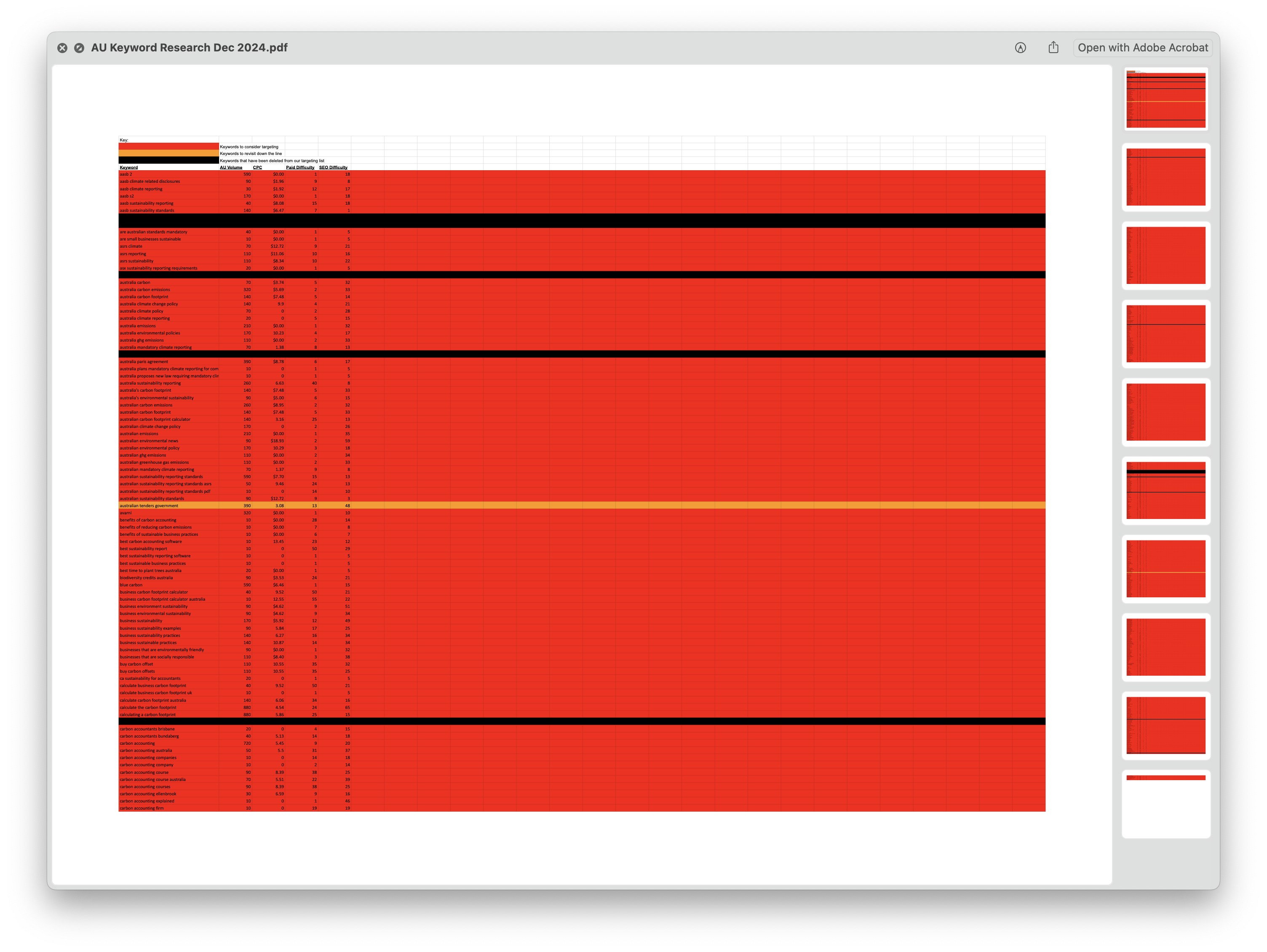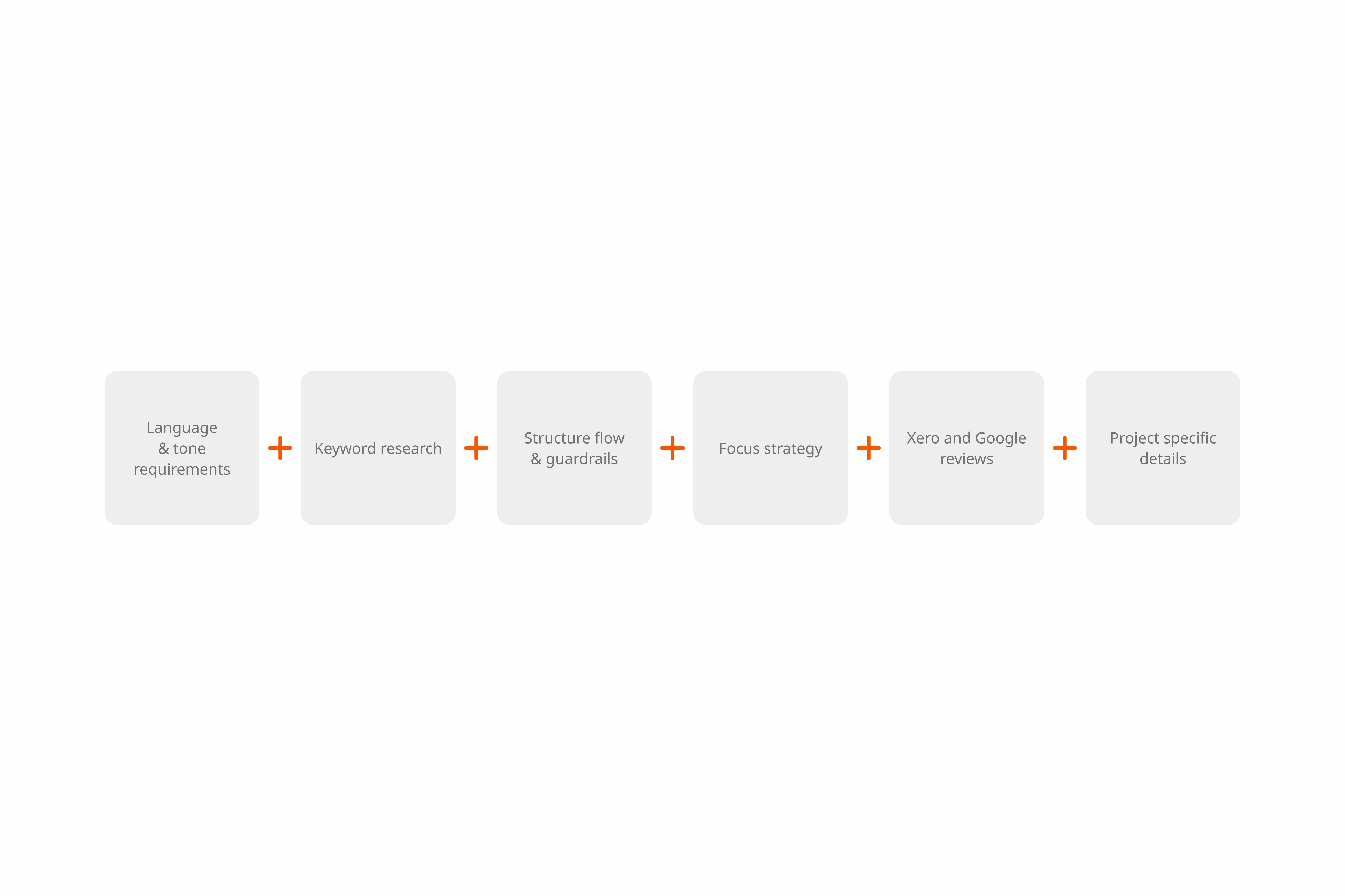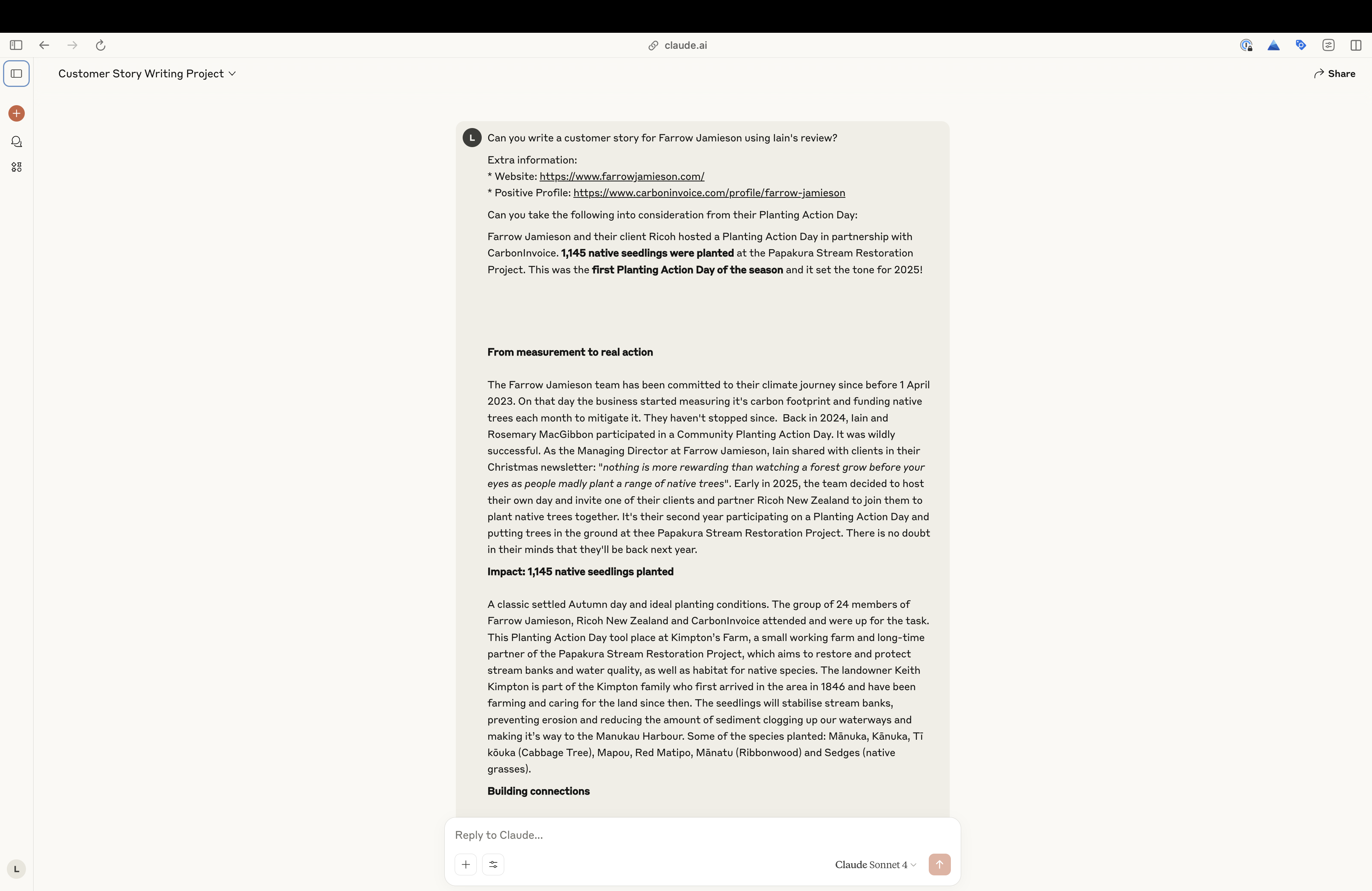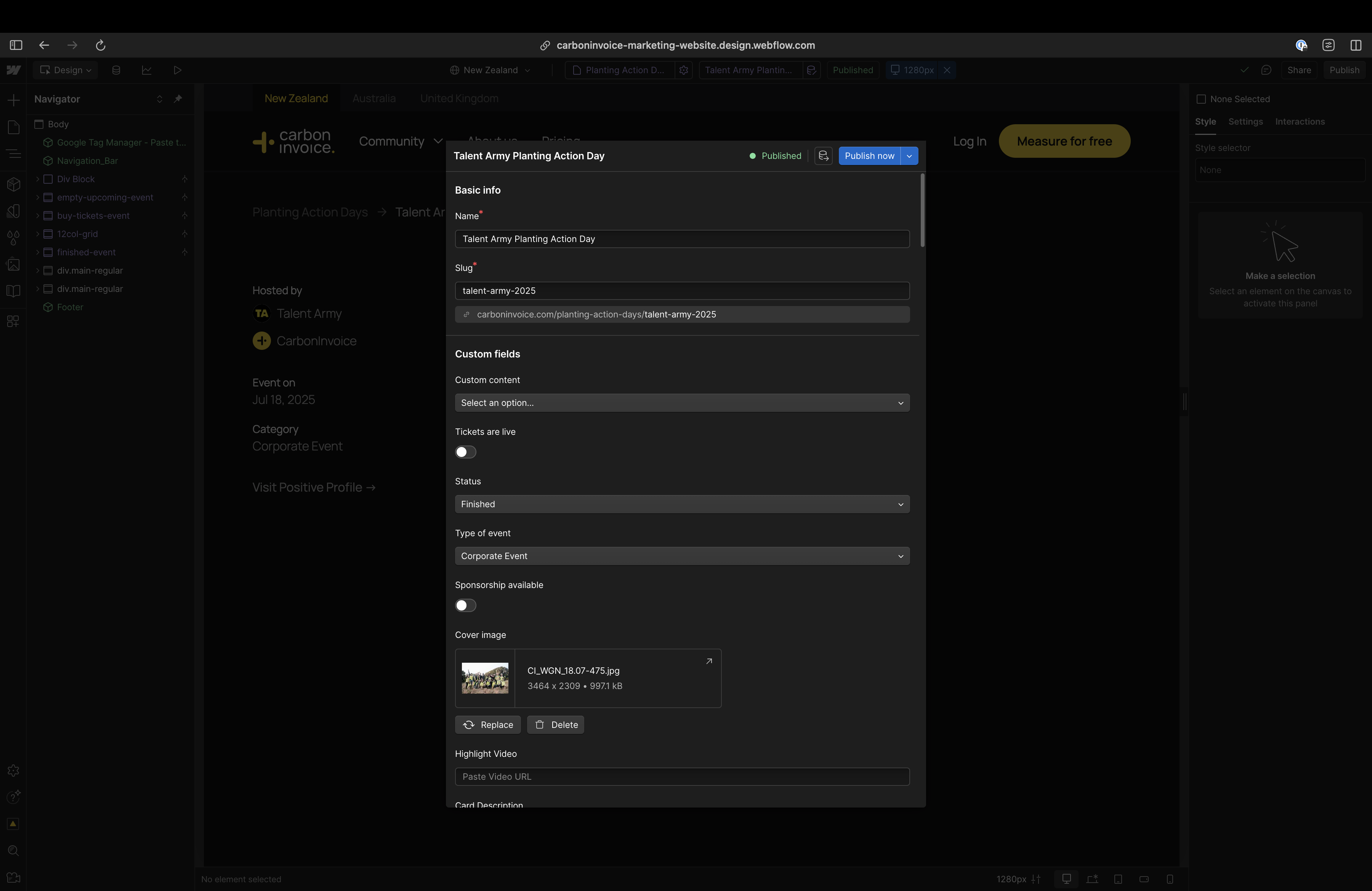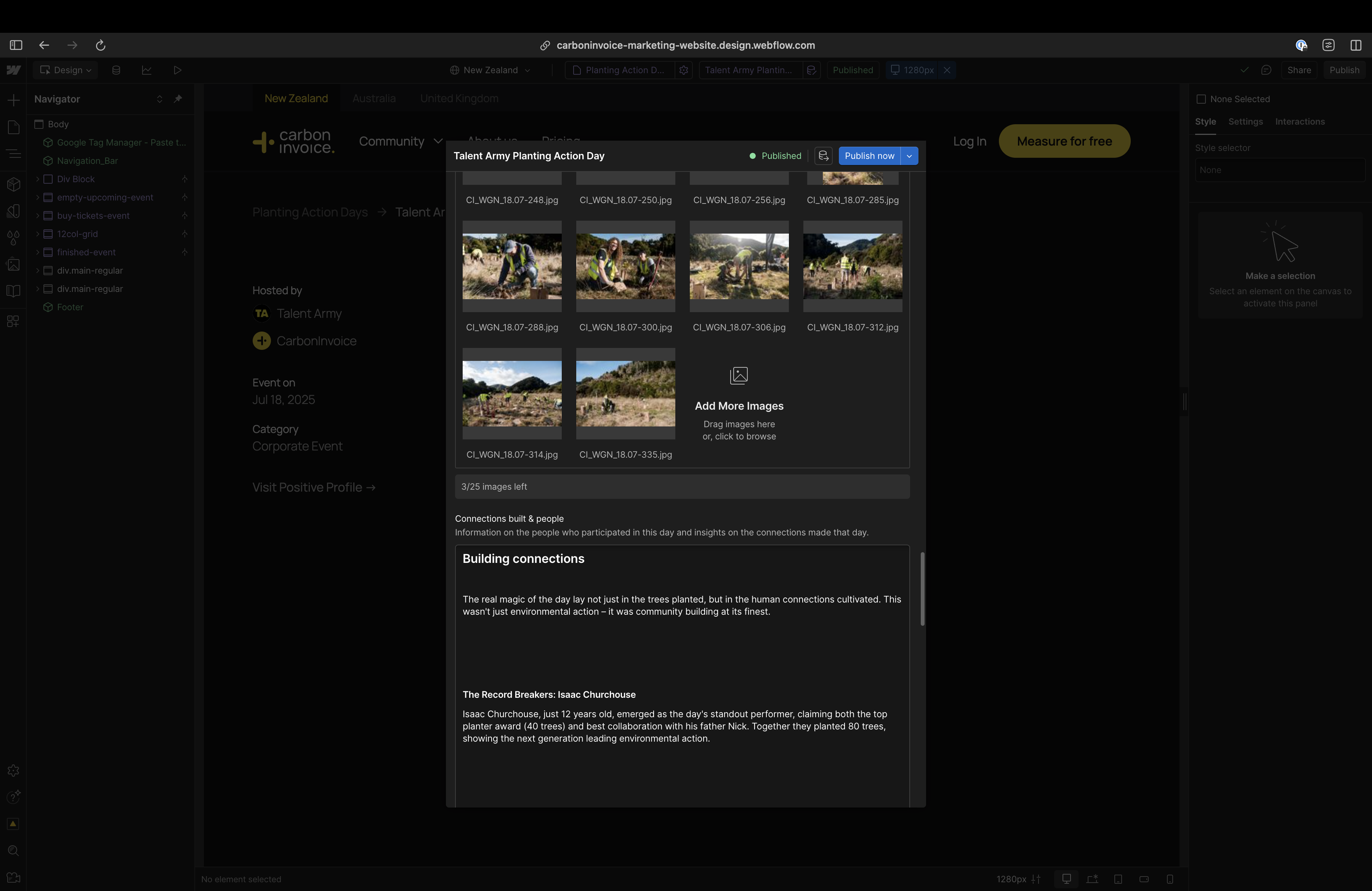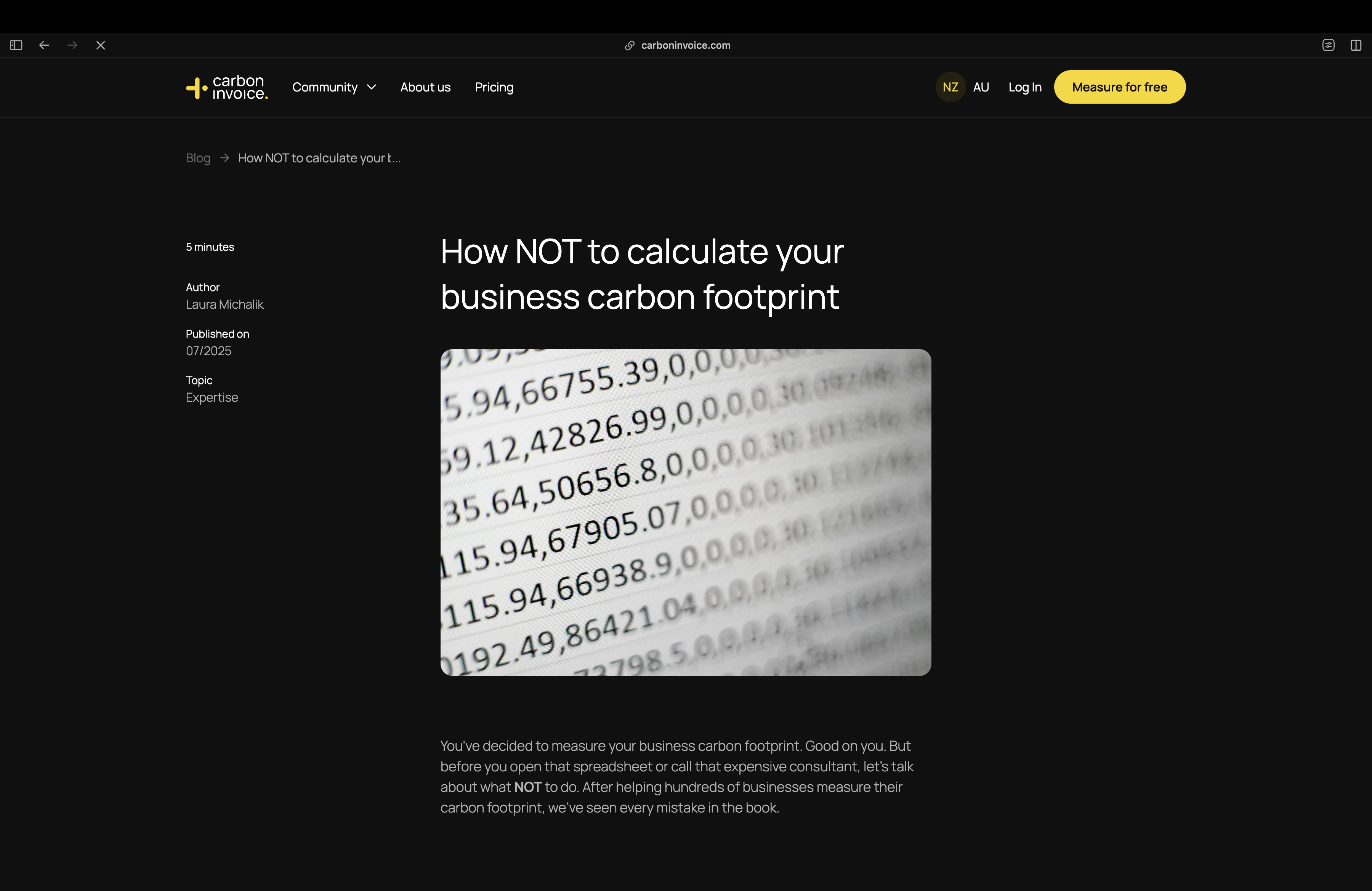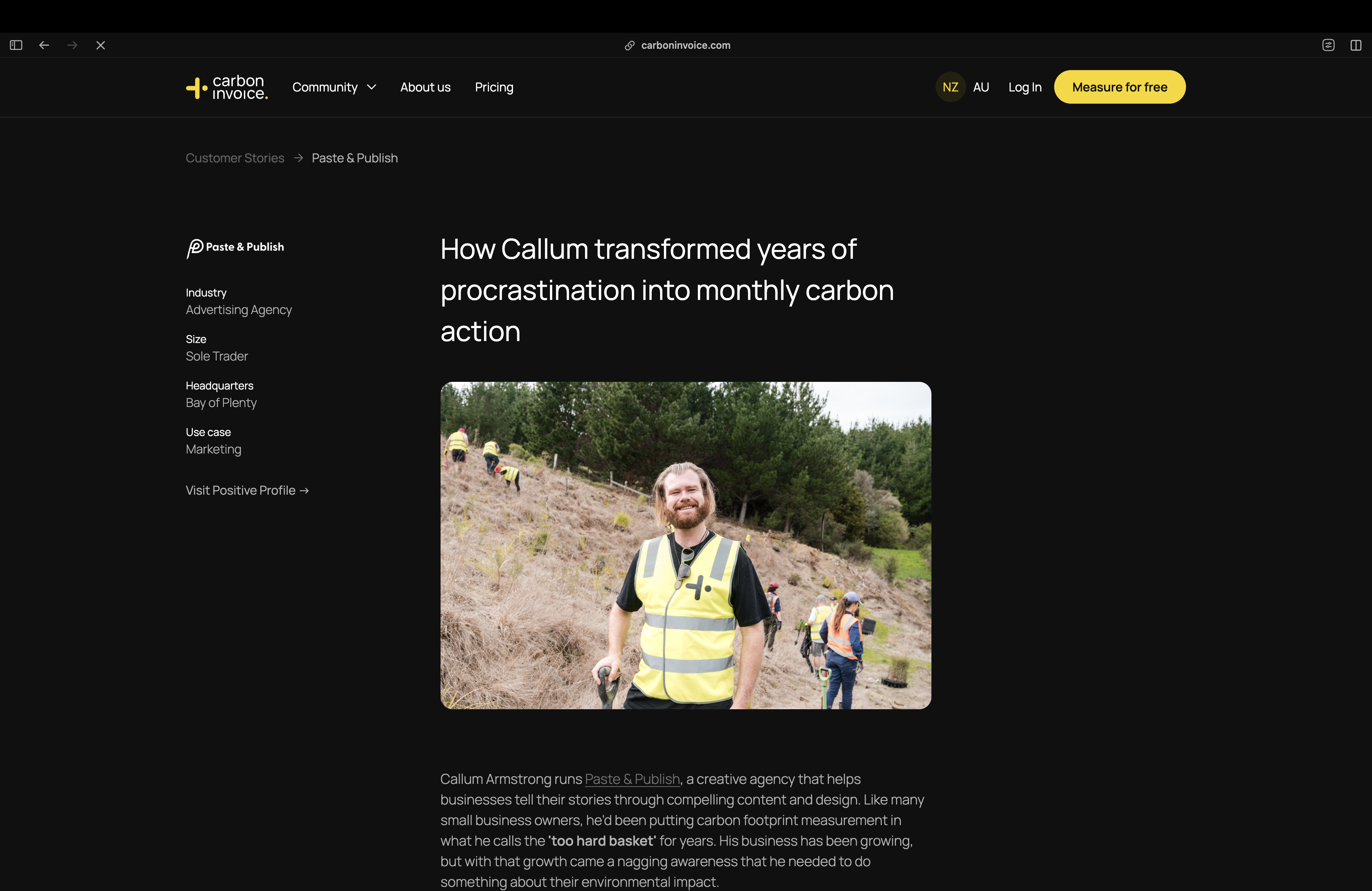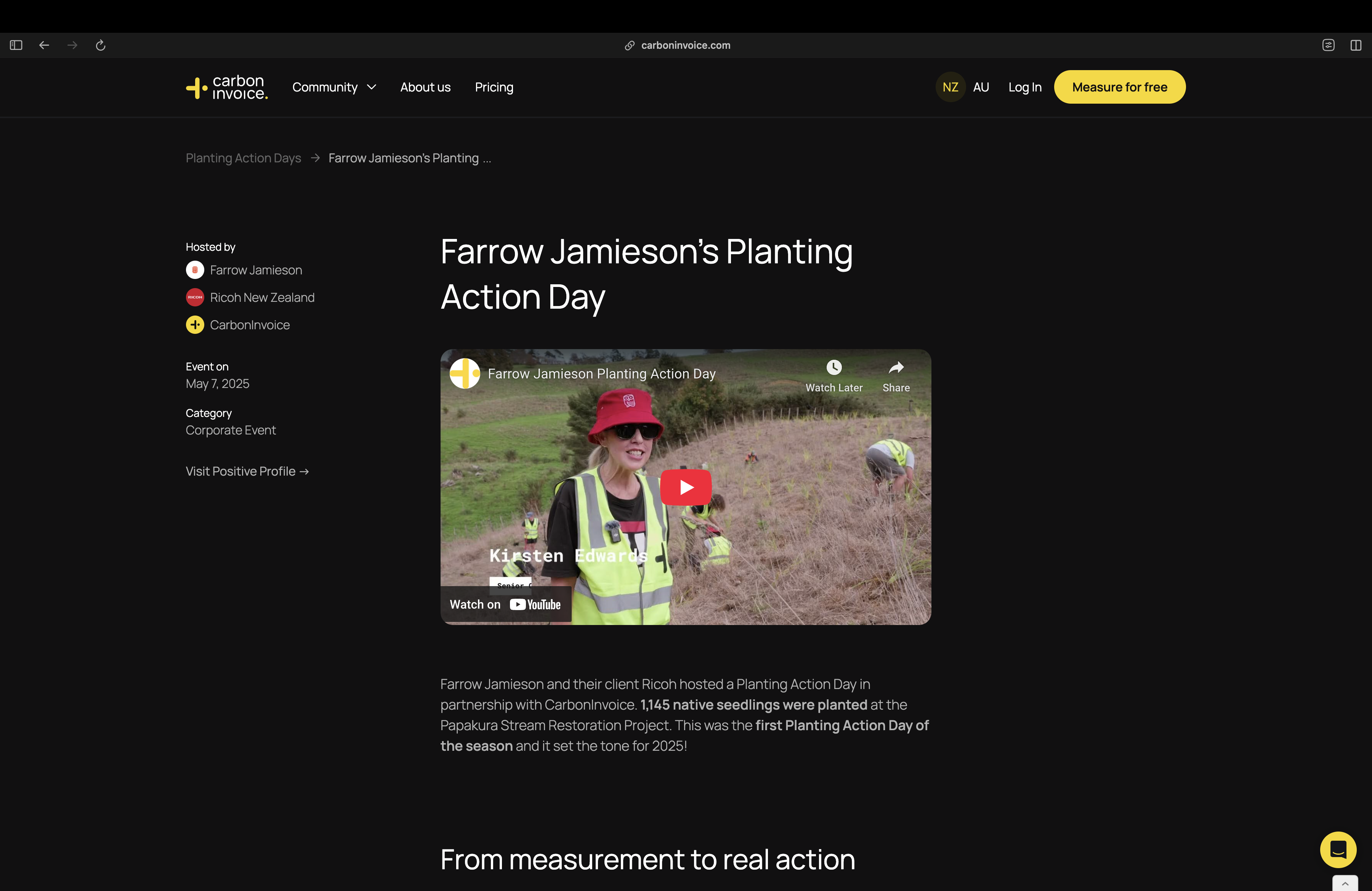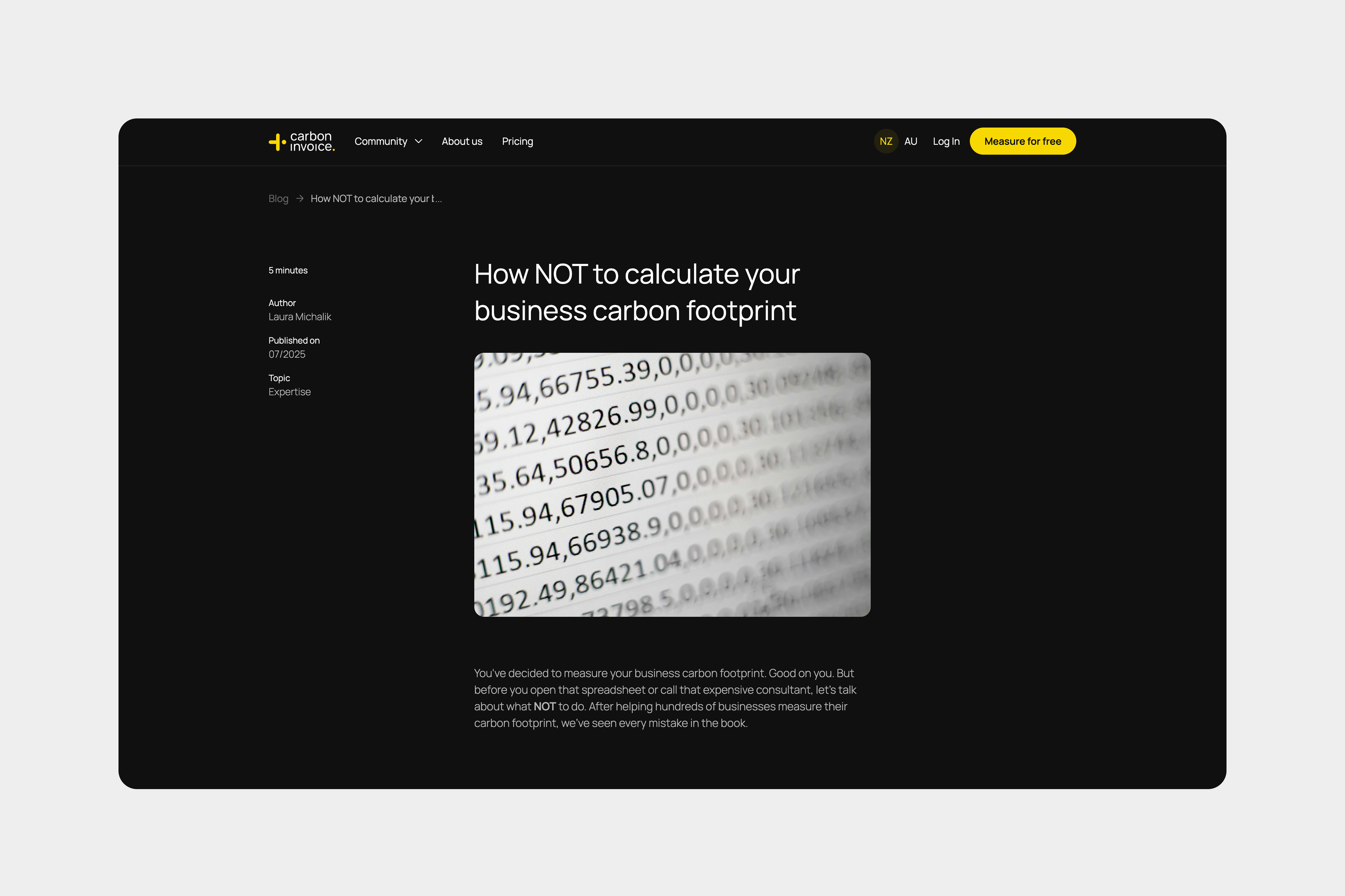
CarbonInvoice
Boosting CarbonInvoice's website ranking using AI
I used Claude to help generate content for our marketing website. With a thorough keyword research and so much customer feedback and reviews, I generated blog posts, planting action days recap pages and customer stories using both real information and important keywords.
Challenge
Working in a busy startup doesn't leave a lot of time to create content that will boost SEO, especially when there isn't someone assigned to do that job. We had keyword research results, but we weren't using it.
Solution
Leverage AI to create targeted website content in batches based on keyword research.
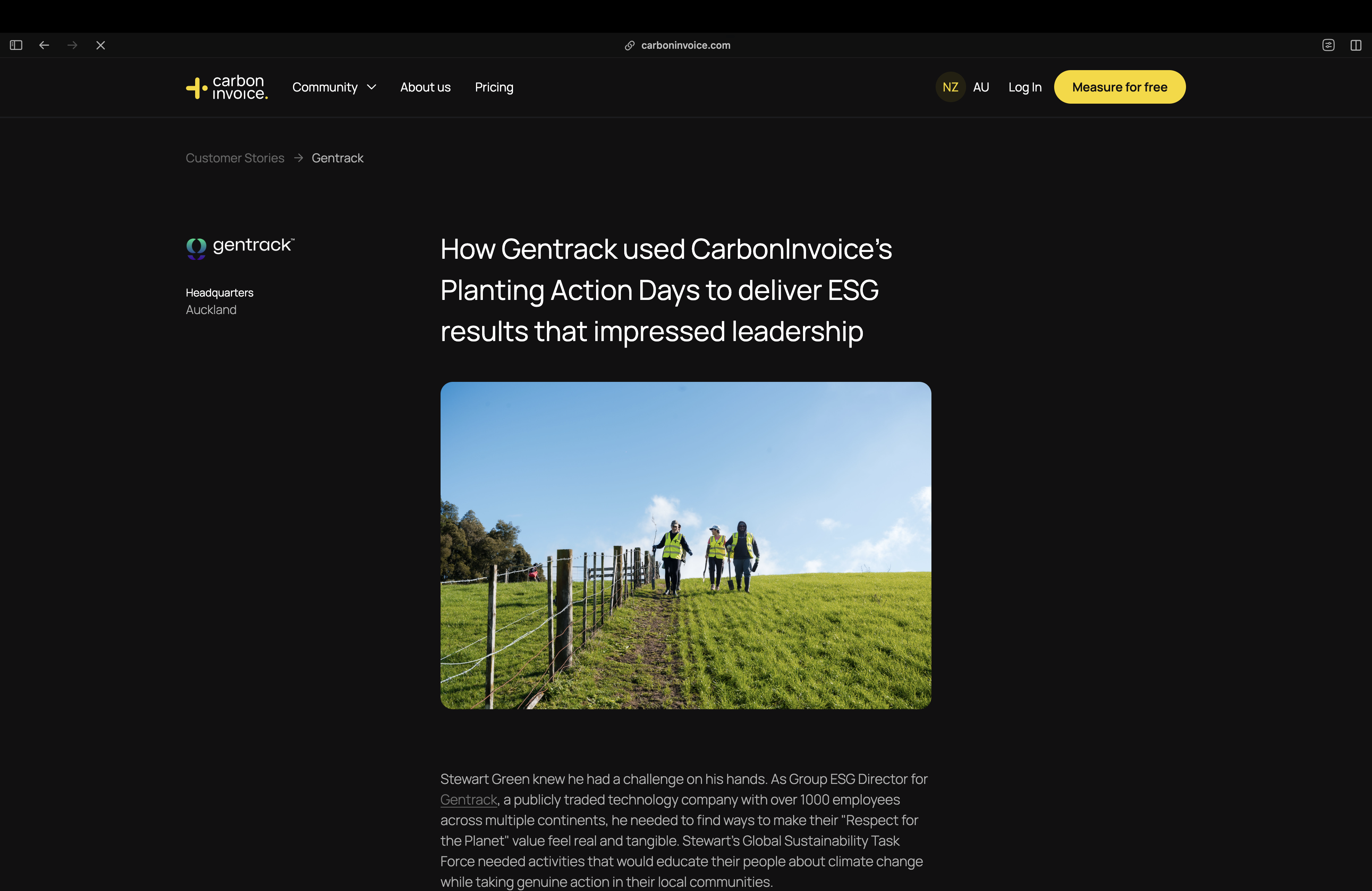

Overview
This experiment was conducted as a way to boost the organic traffic on our marketing website. Here was some data that prompted this project:
70+ product reviews on the Xero App Store;
10+ reviews on the Google Profile.
Blog content was identified by the Growth Hacker as being a path in which we could improve the website's ranking;
42% of visitors who found us through Google clicked on the "Measure for free" CTA;
54.1% engagement rate from which 14.8% resulted in clicking on the "Measure for free" CTA (via organic traffic);
Step 1:
Keyword Research
The Growth Hacker conducted a keyword research to find words and phrases people are using in order to find a solution on the Google Search Engine.
Step 2:
Define content
As mentioned before the Growth Hacker had identified that producing blog content for the website was a good long-term way to have a positive effect on our website's ranking. Now that I knew blog posts were the way to go, I identified topics that we use:
General customer stories: Use the Google and Xero reviews to identify common themes and generate content;
Individual customer Stories: Use the Google and Xero reviews;
Tips: Use the analysis conducted on all the reviews and use the common themes to showcase how SMEs benefit from the product.
Expertise;
Thought leadership;
Planting Action Days Recap: Pair notes taken from each day with testimonials from customers to batch generate recap pages;
Step 3:
Create prompt
For this project I decided to use Claude, as previous experiments taught me that it can analyse PDFs more efficiently compared to ChatGPT. Due to the high amount of information I needed to include, using Claude was a no-brainer.
To train the AI to sound as human as possible, I did some research into other people's experiences trying to accomplish the same, as well as some hands-on experiments of my own by testing generating AI content and compare it to human written text. From my research, I gathered that it's important that the prompt includes a blend of the information shown in the image below:
Here's an example of the final prompt that tackles language and tone requirements:
Language & Tone Requirements
Voice & Style
- NZ English
- Natural speech patterns - write for ESL readers
- Human progression with logical transitions (e.g. "At this point..." - use variants)
- Active voice for direct, engaging sentences
- Present tense for ongoing benefits
- Present continuous for most actions to show ongoing action
- Mix short and long sentences with transition phrases
- Eliminate double dashes - use periods and natural sentence breaks instead
- Use relatable, everyday business language instead of fancy or sophisticated terms
Language to Avoid
NEVER use these words/phrases - always find synonyms:
dive in, delve, resonate, embark on a journey, elevate, realm, cutting-edge, game-changing, in today's world/era, unlock, unleash, unveil, unravel, uncover, critical, crucial, essential, it's important to, pave the way, in conclusion/summary, ultimately, remember that, furthermore, moreover, additionally, bustling, vibrant, revolutionary, unprecedented, best, amazing, incredible, operates, component, wrestling, battling, retention goldmine, forward-thinking
REQUIREMENT: When you find yourself wanting to use any of these words, immediately replace them with natural, everyday synonyms that sound more human and conversational.
Formatting
- Bold/italic for emphasis on key transformation words
- Bullet points for key benefits
- No emojis, hashtags, or dashes (including double dashes)
- Contractions for natural speech
- Testimonials as standalone quoted blocks
- Only first letter capitalised in titles
Specific Terminology
- "Carbon action" instead of "environmental action"
- "Native trees/seedlings" (never just "trees")
- "Small and medium business/SME" (not company/corporation)
- "Offsetting through planting native trees" (not "offset funding")
- "Team building/event" (not "shared experience")
- "Ready-to-use" (not "ready-made")
- Specific titles (CEO, Managing Director) when available
- Only mention "winning more business" if reviewer specifically states it
Content Approach
- Detailed before-state exploration showing specific pain points and their business impact
- Industry-specific language and challenges relevant to the reviewer's sector
- Multiple outcome dimensions (operational, strategic, relationship, competitive)
- Concrete business benefits with specific examples where possible
- Concise problem development - establish core challenges efficiently
- Universal challenge framing - position individual experience as representative of broader business challenges
- Strategic business positioning - frame sustainability as competitive advantage when appropriate
- Eliminate extensive technical explanations
- Remove redundant explanations while keeping the core message
- Focus on a specific feature (when possible) rather than general benefits
- Keep testimonials as exact quotes with reviewer names
- Include specific business context (titles, specialization)
- Use clear time references ("in the past", "once connected")
- End with specific business benefits rather than general statements
- Pose questions throughout to encourage engagement
- Use analogies or testimonial excerpts when relevant
Step 4:
Generate content
Using native Claude features and by feeding it a prompt and supporting documents, I generated customer stories, blog posts and planting day recap pages.
Step 5:
Design & Implementation
Creating content at this scale requires CMS collections to be ready-to-use and scalable for any collection that requires a lot of dynamic text.
With Webflow I used a component called "Rich text" to scale the blog posts and customer stories. It allows anyone on the team to generate and publish content.
